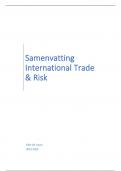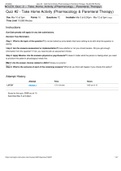Samenvatting
Volledige Samenvatting International Trade & Risk 2023/2024 (ppts + lesnotities)
- Instelling
- Arteveldehogeschool (Artevelde)
Dit is een volledige samenvatting van het vak international trade & risk aan Arteveldehogeschool in de richting Internationaal Ondernemen AJ . Disclaimer: overname uit ppts en lesnotities bijgevoegd (geen boek voor dit vak)
[Meer zien]




